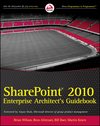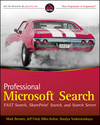Two years ago, I’ve conducted a workshop with Jeff Fried, Miles Kehoe and Mark Bennett at the Enterprise Search Summit 2011. This was my first time at the Search Summit and I’ve surely recognized the value and the great experience that it has provided to me personally and to all others attending the even. This year I urge you to attend it as well. Here is more information on the event, speakers and discount.
Early Bird Registration Ends April 13!
Register today to save $200 off the regular rate!
You only have until April 13 to take advantage of our early bird discount! Enterprise Search Summit is the premier event in enterprise search - we'd love for you to be there! Don't miss your chance to attend and save off the cost of your registration!
5 Reasons to Attend
You won't want to miss this spring's Enterprise Search Summit and your chance to learn from the leading minds in the industry. We've compiled a list of 5 reasons why you should attend Enterprise Search Summit to erase any doubt in your mind that this is the place you want to be May 15-16.
1. Excellent speakers
We have a full program featuring the best of the best speakers in the enterprise search industry! Learn from the experiences of leading organizations and gain expert insights from the search world. See a full list of speakers here.
2. Networking opportunities
Enterprise Search Summit brings together an unparalleled group of search experts, vendors, and practitioners. Network at breakfasts, lunches, coffee breaks, the welcome reception, and in the Enterprise Search Showcase. See the conference program for break times and showcase hours.
3. Enterprise Search Showcase
For two days only, the Showcase features the top companies in enterprise search and offers attendees the opportunity to explore new developments in product and service solutions. Admission to the Enterprise Search Showcase is also FREE with the purchase of a full-conference pass!
4. In-depth Pre-conference Workshops
Join us for a series of workshop sessions on Monday, May 14, featuring discussions about taxonomies, project management, search platforms, text analytics, and more! See the schedule of pre-conference workshops and descriptions here.
5. Learn from Real-World Implementations
Enterprise Search Summit features representatives from leading companies such as Sematext, Search Technologies, Raytion, and many more, who will share real-world examples of search implementation and their experiences. See a full list of speakers and companies here!
The Venue
Hilton New York
1335 Avenue of the Americas
New York, NY 10019
The Hilton New York is the official conference hotel for Enterprise Search Summit. The hotel is located on Avenue of the Americas (6th Ave.) between West 53rd and West 54th Streets. 53rd street is west bound and 54th street is east bound.

 Carlos Valcarcel has been in software development since the mid-80's working in financial services, insurance and technology....
Carlos Valcarcel has been in software development since the mid-80's working in financial services, insurance and technology.... Natalya Voskresenskaya has been working in the field of Information Technology for over 10 years. With experience in design, architecture...
Natalya Voskresenskaya has been working in the field of Information Technology for over 10 years. With experience in design, architecture... Paul Olenick is a Sr. SharePoint and Enterprise Search Consultant for Arcovis (Gold Partner and Microsoft V-TSP) where he leads projects for large enterprise customers across multiple verticals...
Paul Olenick is a Sr. SharePoint and Enterprise Search Consultant for Arcovis (Gold Partner and Microsoft V-TSP) where he leads projects for large enterprise customers across multiple verticals... Leonardo Souza, Senior Technical Instructor at FAST University/Microsoft is a professional with thirteen years experience working with Microsoft...
Leonardo Souza, Senior Technical Instructor at FAST University/Microsoft is a professional with thirteen years experience working with Microsoft... Michael McCabe currently works as an Information Architect for Gig Werks and focuses on the SharePoint product. He has 18 years experience...
Michael McCabe currently works as an Information Architect for Gig Werks and focuses on the SharePoint product. He has 18 years experience...




